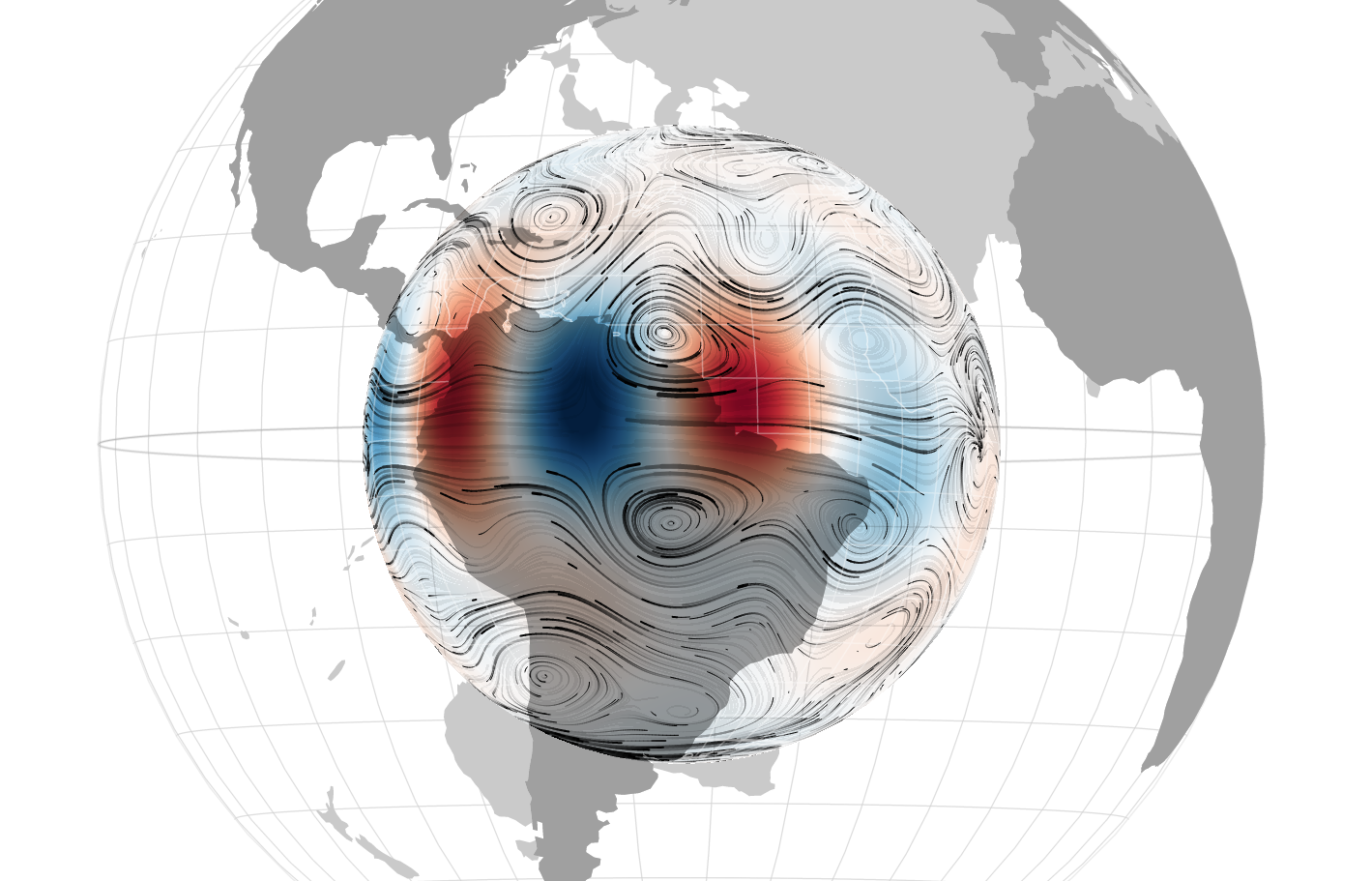'Completely new' type of magnetic wave found surging through Earth's core
The waves creep across the outer core every seven years.

Scientists have detected a completely new type of magnetic wave that surges through Earth's outer core every seven years, warping the strength of our planet's magnetic field in the process.
The waves — dubbed "Magneto-Coriolis" waves because they move along the Earth’s axis of rotation, per the Coriolis effect — creep from East to West in tall columns that can travel up to 930 miles (1,500 kilometers) per year, the researchers wrote in a March 21 paper in the journal Proceedings of the National Academy of Sciences. Using a fleet of European Space Agency (ESA) satellites, the team pinpointed the mysterious waves to the outermost layer of Earth's liquid outer core, right where that layer meets the rocky mantle — roughly 1,800 miles (2,900 km) below the planet's surface.
According to the researchers, the existence of these waves could help explain mysterious fluctuations in the planet's magnetic field, which is generated by the movement of liquid iron in the planet's outer core. Satellite measurements of the magnetic field taken over the last 20 years show that the field's strength dips every seven years or so, coinciding with the oscillations of these newfound waves.
"Geophysicists have long theorized over the existence of such waves, but they were thought to take place over much longer time scales," lead study author Nicolas Gillet, a researcher at the Grenoble Alpes University in France, said in a statement. "Our research suggests that other such waves are likely to exist, probably with longer periods — but their discovery relies on more research."
Related: 50 interesting facts about Earth

The core of the matter
Earth's outer core is an orb of molten iron that churns and sloshes with constant motion. The flow of this rotating, electrically conducting fluid is thought to be the source of Earth's magnetic shield, which wraps around the planet and stretches for hundreds of thousands of miles into space, shielding Earth from harmful radiation.
The planet's magnetic field is always changing, both on short- and long-term time scales. Long-term, the magnetic field has been gradually weakening for hundreds of years. Recent measurements taken by ground- and satellite-based instruments also show regular variations in the magnetic field's strength and shape that occur every few years.
Sign up for the Live Science daily newsletter now
Get the world’s most fascinating discoveries delivered straight to your inbox.
Scientists have long thought that these short-term variations in the field's strength are influenced by activity in the planet's outer core. This new study may provide the long-sought proof.
The study authors looked at more than 20 years of magnetic field data, collected by the ESA's Swarm satellite mission between 1999 and 2021. Swarm is a fleet of three identical satellites deployed to measure magnetic signals from the Earth's core, crust, oceans and atmosphere. The team combined this satellite data with earlier magnetic field measurements taken by ground-based sensors and then used a computer model to simulate the geodynamo, or the convective flow of fluid in the Earth's outer core.
Through these combined measurements, the team identified the presence of Magneto-Coriolis waves in the planet's core for the first time.
The source of these waves remains a mystery for now, but they likely stem from "disturbances deep within the Earth's [outer] core," Gillet said.
It's also likely that these waves aren't the only ones oscillating through the core-mantle boundary, Gillet added. While the Magneto-Coriolis waves explain some of the seven-year magnetic field fluctuations observed by Swarm and other sensors, other as-yet-undiscovered waves with even longer periodicities could account for magnetic field variations on longer timescales, Gillet said. To discover such waves, researchers will just have to keep their eyes on the core.
Originally published on Live Science.

Brandon is the space/physics editor at Live Science. His writing has appeared in The Washington Post, Reader's Digest, CBS.com, the Richard Dawkins Foundation website and other outlets. He holds a bachelor's degree in creative writing from the University of Arizona, with minors in journalism and media arts. He enjoys writing most about space, geoscience and the mysteries of the universe.










